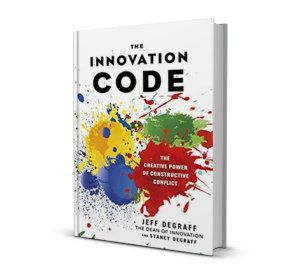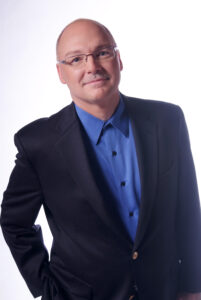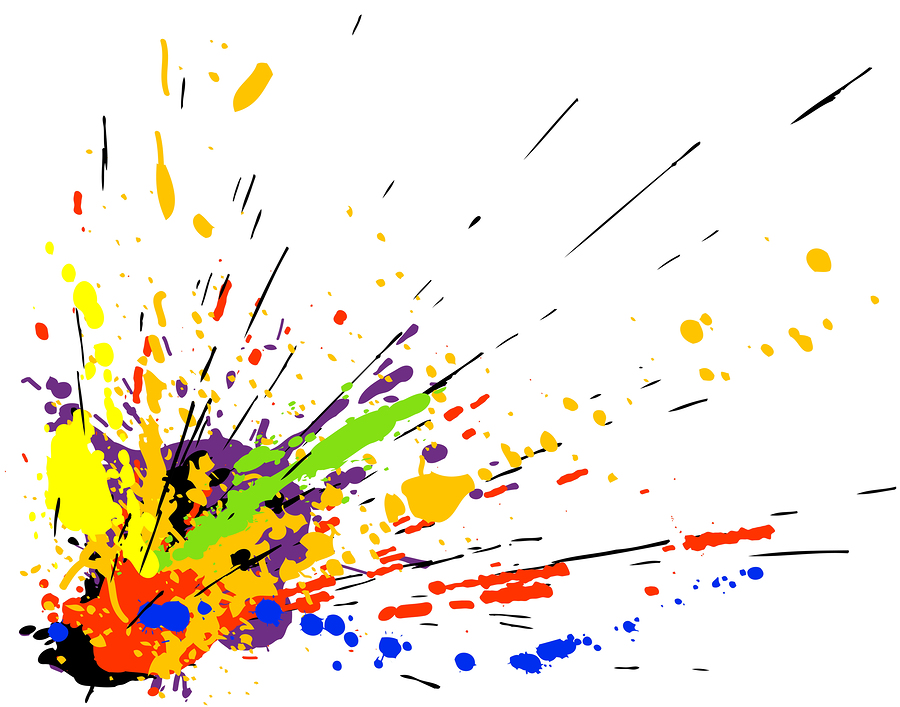Disrupt to Innovate
Teamwork. Harmony. Getting along.
If these words come to your mind when you think about brainstorming and innovation, you’ll want to pay close attention.
Because it’s about not getting along, about disruption, about disagreement, and about contrasting perspectives. That’s what makes innovation happen.
In The Innovation Code: The Creative Power of Constructive Conflict, Jeff DeGraff and Staney DeGraff introduce a framework to explain how different kinds of leaders can create constructive conflict in an organization. Staney DeGraff is the CEO of Innovatrium Institute for Innovation. And Jeff DeGraff is known as the Dean of Innovation, a professor at the Ross School of Business at the University of Michigan and a friend of mine for many years. I recently spoke to Jeff about his latest book.
Many people think that conflict and in-fighting must be solved before you can innovate, but you teach that it’s a healthy part of the process. Why is discord a good thing?
Innovation is simply a form of useful novelty. It’s the opposite of standardization. Positive tension is required to generate the energy required to create unique ideas. Apathy is the death of innovation, not conflict. So, to make innovation happen, you need to have divergent worldviews – points of departure. This creates new connections and forces ideas to morph into ever more potent forms. Take a good look at the most creative civilizations throughout history, and you will find they sit at the crossroads where a variety of people, and their ideas, meet both geographically and culturally: Athens, Hangzhou, Vienna, or New York. The same is true for teams and partners: Anthony and Stanton, Lennon and McCartney, or Shaq and Kobe. Every strength brings a weakness, and we need the “other” to push us forward and to overcome our own shortcomings. The key is to keep these conflicts constructive and focused on ideas, not personalities.
4 Approaches to Innovation
In The Innovation Code, you introduce us to four approaches to innovation. Would you briefly walk us through them?
There are four fundamental creative worldviews that produce innovation by pulling us, our communities, and all the constituents in our situations in different directions:
- The Sage
- The Artist
- The Athlete
- The Engineer
Let’s take a quick look at all four types and how they function within the structure and dynamics of the organization to produce innovation.
The Artist Worldview
This type is clever and creative. They envision change, so their influence is based on anticipating a better future and generating hope in others. Innovation and adaptation are actively pursued. This type is driven to express themselves in spontaneous, creative responses to their surroundings. They are imaginative, able to handle a high degree of ambiguity and comfortable with abstract ideas. Success for this type is defined by expressing new ideas and prototyping those ideas when possible. Being original is highly prized.
Examples Artist Leaders
- Larry Page (CEO of Google), Jeff Bezos (CEO of Amazon), Peter Diamandis (CEO X PRIZE Foundation) and Elon Musk (CEO of Tesla)
The Athlete Worldview
The athlete is aggressive and decisive. This leader actively pursues goals and targets and is energized by competitive situations. Winning is a dominant objective, and the focus is on external competitors and market place position. These leaders are hard drivers and producers, very demanding of themselves and others. Speed, stealth and discipline are key to their approach. Success for this type is in energizing employees by expanding opportunities for problem solving and redeploying resources. Power is key.
Examples Athlete Leaders
- Angela Merkel (Chancellor of Germany), Indra Nooyi (CEO of PepsiCo), Jamie Dimon (CEO of JPMorgan Chase) and Tim Cook (CEO of Apple)
The Sage Worldview
This type is caring and empathic. The Sage is aware of others and cares for the needs of individuals. This leader is skilled at both building a community of people and sharing knowledge among them. They seek interaction among community members and allies; therefore, they use processes such as conflict management and consensus decision making as a means. Their success is defined by the creation of strong relationships through dialog, trust and understanding. Outcomes of these collaborative practices are shared values and commitment. They use their team orientation and cooperative nature to accomplish their goals. Morale and commitment are actively pursued.
Examples Sage Leaders
- Jimmy Wales (CEO of Wikipedia), Jack Ma (CEO of Alibaba), Geoffrey Canada (President of the Harlem Children’s Zone) and Mary Barra (CEO of General Motors)
The Engineer Worldview
This type is a well-informed technical expert. They are diligent, meticulous and function-based. Monitors track and document details and influence others based on the control and management of information. Improving efficiency through process redesign and the implementation of reliable technology is a hallmark of the Engineer. Success for this type is in improving quality through the use of procedures. This leader is risk averse and seeks to take variation out of the system, valuing standardization and consistency. Measurement is used as a tool to achieve these values.
Examples Engineer Leaders
- Michael Bloomberg (former mayor of New York City), Alan Mulally (former CEO of Ford), Xi Jinping (President of the People’s Republic of China) and Warren Buffett (CEO of Berkshire Hathaway)
How Opposites Work Together
Are there specific opposite pairs that tend to innovate best?
There is a tension between the Sage and the Athlete forms of innovation that shows up as everyday tradeoffs regarding how fast an organization, team, or leader must move to act upon innovation. The question, “How fast?” is key to this positive tension. Do we pursue sustainable organizational competencies and culture, which take time to develop, or do we pursue a short-term opportunity, which must be acted upon quickly? This temporal element of innovation determines which projects are funded, who leads these efforts, and what strategic horizon the organization will focus on.
There is a second tension involving the Artist and the Engineer approaches that is based on the magnitude and commensurate risk to be assumed in pursuit of innovation. The question, “How much?” defines the center of this positive tension. Do we pursue revolutionary innovation, which brings great risk and expense, or do we pursue incremental and scalable innovation, which has less risk but often lacks sufficient inventiveness to develop new markets? The level of ambition, and corresponding risk, often determines the course of action a firm will take. For example, a start-up biotech firm will typically develop very novel therapies because it lacks the resources to compete on scope or scale. An incumbent pharmaceutical company, however, will develop relatively minor enhancements to an existing medication to extend the life of its patents and revenues.
Have you ever had to coach two people (say an Artist and Engineer) through a particularly difficult period? How did that go?
Years ago, I was asked to help put together one of the largest medical center mergers in US history. The two heads of cardiovascular surgery couldn’t have been more different. One was a data-driven Engineer and the other a free spirited Artist. Both men were world-famous. Each held the other in complete contempt. When the meetings proved to be unproductive, I asked if they could go separately on some field trips around the country to benchmark best practices for reducing the recovery time of heart surgery patients. We held a report-out session with the leadership teams of both hospitals. Each of the surgeons had included many innovative ideas in their report-outs, presumably to one-up the other. When I pointed out that there was considerable overlap between some of the ideas, they began to debate how they would improve them. The ideas became the subject of the conflict rather than the personalities of the two men. They both took responsibility for the innovative projects that came from these hybrid ideas. One of the ideas became so successful that it eventually become a standard surgical procedure throughout the world for which they were both credited. I’m not sure either man came to like the other, but they respected each other and understood that their success was intertwined.
When to Reshuffle Your Team
Talk a little about reshuffling your team. When should you do it? What are the benefits?
 Think about your favorite competitive team sport. At some point during the game, some players come off and other come on. That’s because the situation requires different types of talent at different times. Artists are great at starting projects because their vision helps them navigate in highly ambiguous situations. So it makes sense to let them lead at first. Athletes and Sages are stronger where there is some clarity about goals and values and are better suited to take over the lead as the things develop. Engineers function well where things gets complex, with lots of data and regulations, and the innovation needs to achieve scale. This makes them strong leaders at the end. Of course, all types are present at all times, but each type has a time to shine and a time to let others do the same.
Think about your favorite competitive team sport. At some point during the game, some players come off and other come on. That’s because the situation requires different types of talent at different times. Artists are great at starting projects because their vision helps them navigate in highly ambiguous situations. So it makes sense to let them lead at first. Athletes and Sages are stronger where there is some clarity about goals and values and are better suited to take over the lead as the things develop. Engineers function well where things gets complex, with lots of data and regulations, and the innovation needs to achieve scale. This makes them strong leaders at the end. Of course, all types are present at all times, but each type has a time to shine and a time to let others do the same.
How is diversity linked to innovation?
Innovation is highly situational. One size never fits all. So you need to have a diverse range of people and techniques to make innovation happen. Apathy is the death of innovation. Positive tension is required to generate truly novel solutions. Think of your team like super heroes. Everyone is super, but in a different way. Simply look at the top 25 places that produce the lion’s share of intellectual property on the planet and you will notice that they are significantly more diverse than their neighbors. Diversity comes in all forms: ethnic, cultural, cognitive, and skill based. Innovation is born from a heterogeneous gene pool.
For more information, read The Innovation Code: The Creative Power of Constructive Conflict

